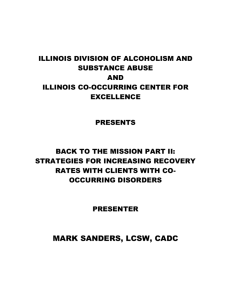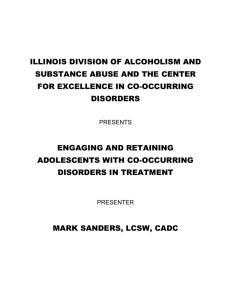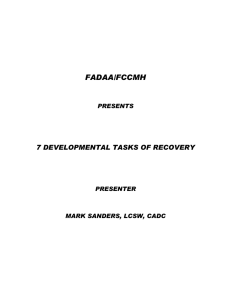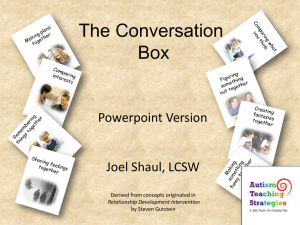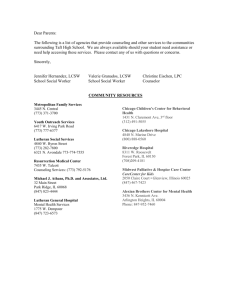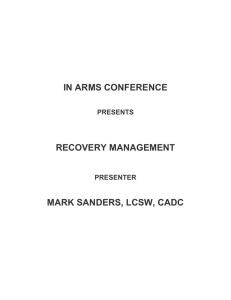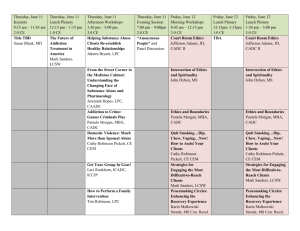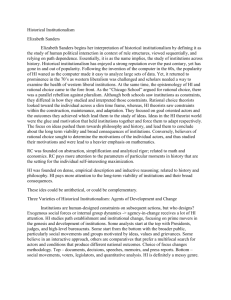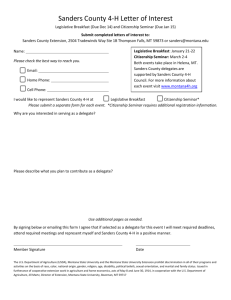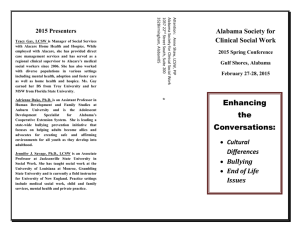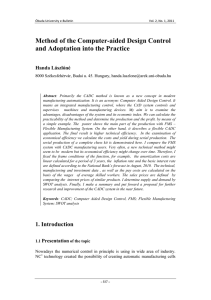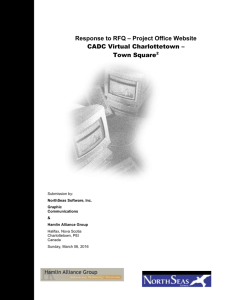20StrategiesMARRCHConference Sanders Tuesday
advertisement
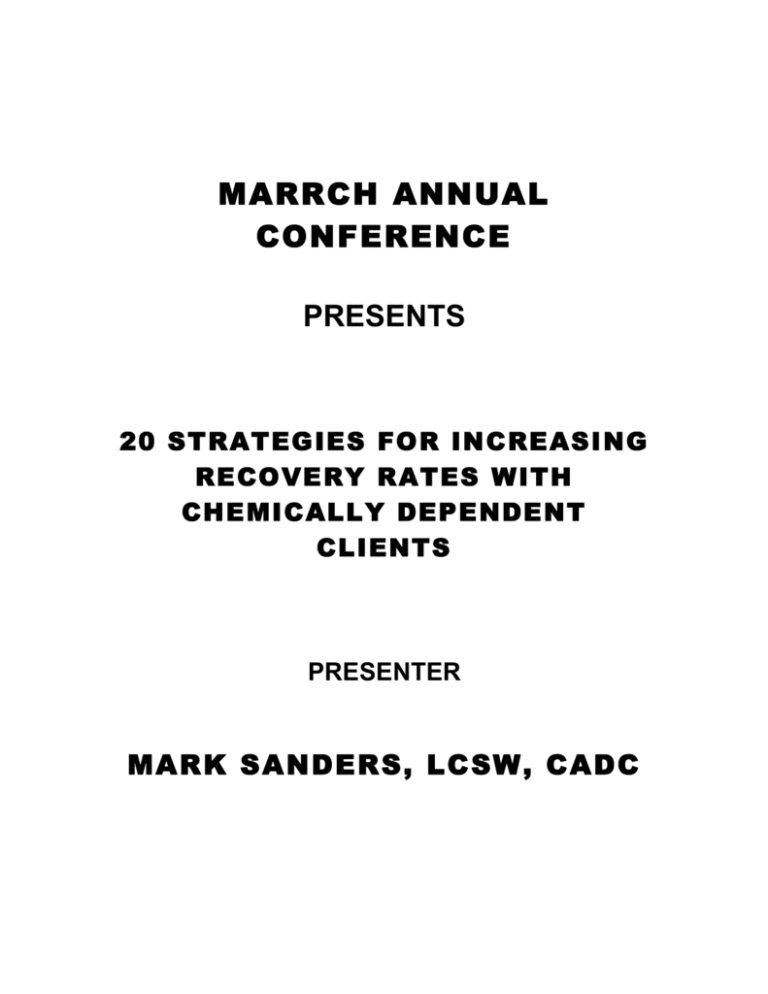
MARRCH ANNUAL CONFERENCE PRESENTS 20 STRATEGIES FOR INCREASING RECOVERY RATES WITH CHEMICALLY DEPENDENT CLIENTS PRESENTER MARK SANDERS, LCSW, CADC 2 20 STRATEGIES FOR INCRE ASING REC OVER Y RATES 1. 2. Sharpen assessment and treatment skills. A. Other addictions B. A hidden psychiatric disorder C. Trauma D. Unresolved grief E. Relationships F. Impact of the drug culture Provide the four essentials when possible. A. B. C. D. 3. Use evidence-based practices. A. Cognitive behavioral therapy – Aaron Beck B. 12-step facilitation – Nowinski C. Family therapy – Todd and Stanton D. Contingency management/incentives E. The therapeutic relationship – Rogers, Miller, and Small F. Integrated dual-disorders treatment 3 Mark Sanders, LCSW, CADC 4. onthemark25@aol.com Help to disengage from cultures of addiction. Types of Drugs Socially celebrated Socially tolerated Socially prohibited 5. Types of Addicts Acultural Bicultural Help develop recovery capital – assets an individual possesses that aid in the recovery process: • • • • • • • • 6. (773) 549-7914 Success prior to addiction or mental illness Vision for the future Employability Vocational skills Family support Community support Spirituality Return to culture Provide treatment consistent with how we traditionally manage chronic illnesses. Definition of Recovery Management Recovery management is an approach that shifts from treating addiction in shortterm acute episodes toward how we traditionally treat other chronic and progressive illnesses (diabetes, cancer, etc.). Recovery management stresses that recovery from addiction is best achieved within a sustained partnership that provides ongoing recovery support and anchors the recovery within communities. 3 Continuums of Care under Recovery Management A. Pre-recovery support B. In-treatment recovery support C. Post-treatment recovery support (long-term, in the client’s natural environment 4 Mark Sanders, LCSW, CADC 7. onthemark25@aol.com (773) 549-7914 Try not to pack too much into the treatment plan too soon. Stages of change Precontemplation Contemplation Determination Action Maintenance 8. 9. Help client successful complete treatment A. Place clients in the level of care they are motivated for B. Learn from client satisfaction surveys C. Have strategies to keep clients motivated while they wait D. Provide pre-treatment services E. Provide gender specific services F. Provide services that meet the needs of youth G. Evaluate the hours the services are provided H. Continue to increase program effectiveness I. Provide an environment in which a diversity of clients feel welcome J. Connect with families Increase Family Involvement – What the research says: A. Program staff are more effective recruiters than clients. B. If you have one family members attend the initial intake session, you greatly increase the likelihood that the family will participate. C. If you contact a relative while the client is in your office, you increase the chance that the relative will participate. 5 Mark Sanders, LCSW, CADC 10. 12. (773) 549-7914 D. If you use well-trained, experienced workers as recruiters who are genuinely enthusiastic about family work, you increase the chance that the family will participate. E. If you allow relatives to talk about their hurt, pain, and fear, you increase the chance that they will participate. Consider multiple pathways to recovery. A. B. C. D. 11. onthemark25@aol.com Native American Wellbriety Movement GLIDE Memorial Church Women for Sobriety DDA Increase 12-step attendance. A. Firm linkage B. Escorts C. Refer when stable D. Suggest tasks E. Go early F. Volunteer G. Stay late H. Get involved in sober activities I. Temporary sponsorship J. Six different meetings Teach social and living skills. A. How to dress for success B. Public speaking 6 C. Conversation skills Mark Sanders, LCSW, CADC onthemark25@aol.com (773) 549-7914 13. Connect with clients cross-culturally. 14. Help the client discover and rehearse high-risk relapse situations. 15. Conduct client surveys. 16. Use successful alumni. 17. Develop organizational health. 18. Guard against burnout and compassion fatigue. Burnout differs from compassion fatigue in that burnout is caused by stress and compassion fatigue is caused by caring. Signs of compassion fatigue • • • • • • • • • • • • • • • • Anger Frustration Tardiness Exhaustion Depression Feeling hopeless Blaming others Irritability Sleep problems Rudeness Gossiping Erosion of idealism Flashbacks Intrusive thoughts Spiritual distress Shift in world view Five things that help A. B. C. 7 Mark Sanders, LCSW, CADC onthemark25@aol.com (773) 549-7914 D. E. 19. Increase staff competence. 20. Celebrate small victories and encourage the client to do the same. 8 Mark Sanders, LCSW, CADC onthemark25@aol.com (773) 549-7914
